Welcome to the RM Risk Management Blog
This is the area for all things RM news related
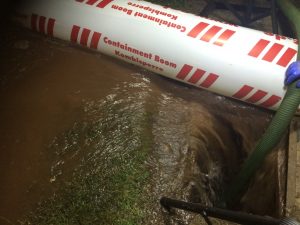
Why Firewater Risk Assessments Could Save Your Business
Have you ever thought about what would happen to your business if it was affected by contaminated firewater? Did you know that as well as causing untold damage to your business and the environment, it could put you at the risk of being fined, or even prosecuted? It’s something to think about. Having a clear strategy in place to mitigate the risks, and to plan your emergency responses in advance may save you the trouble. How risk assessments can help Undertaking risk assessments can help you understand if your current processes are good enough, or if you need to put in place some additional measures to deal with any firewater run-off. You can use this information to develop an effective strategy that works for you. You should consider the following: products you store on-site that could become damaged by firewater; the amount of water you think would be needed […]
Read More
Fire Door Inspection: Why Choose RM Risk Management?
Choosing a risk management firm isn’t easy, is it? In fact, the task is made harder simply because risk management is so easily misunderstood. Take fire door inspection, for instance. Do you really need an ongoing partnership with a risk management firm to keep on top of something like that? As it turns out, you do. The benefits of HASAD If you ask RM Risk Management to carry out a fire door inspection, you’ll gain free access to the Health And Safety Advisory Database (otherwise known as HASAD). It’s actually a year’s free license to HASAD, which includes an online repository for your health and safety documentation, the ability to view KPIs on risk status and use interactive reports to monitor your company’s HSE performance. However, before this, we’ll even provide a free one hour’s check of your fire doors to give you an indication of where you […]
Read More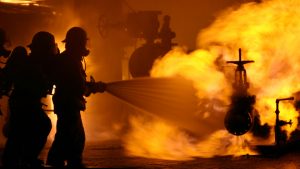
Health & Safety Risk Assessment: As Important as Fire Risk Assessment?
The horrific Grenfell Tower incident in 2017 ushered in a new, intense focus on fire safety. This is absolutely essential, but it has inadvertently resulted in some property managers overlooking the rest of their health and safety duties on site. Assessment of fire safety shouldn’t detract from the importance of conducting regular General Health & Safety Risk Assessment and inspections. For instance, when a guest at the White Hart Hotel in Upton-upon-Severn tragically fell to their death from an open window in 2015, subsequent investigations discovered that low-cost alterations to the window height could have prevented their death. Overlooking risks with low probability but high severity can lead to dire consequences. So, today, we’ll reveal why general health and safety and fire risk assessment checks, are so important. The fire safety law Fire safety should never be ignored, but the same goes for general health and safety. It’s why […]
Read More
Low Occupancy Property – Water Hygiene Audit
A guide to making a commercial property’s water system safe, during periods of low occupancy It’s likely to be in breach of law to simply occupy a building that’s operating at low occupancy or has stood idle. Building Managers need to conduct a Low Occupancy Property – Water Hygiene Audit and recommission their water systems. To read HSE guidance on what you must do, click here. Alternatively, read our guide below. Why is it so important to audit water hygiene, at times of low occupancy? Because Legionella bacteria may now be lurking in water systems! It’s vital that we audit water systems now because water usage has been so significantly reduced in commercial properties. And in addition to Legionella risk, drinking water retained within buildings may no longer be potable following a period of prolonged stagnation. If duty-holders haven’t put a proper recommissioning process in place for their […]
Read More
Making a property’s water system safe post lockdown
A guide to recommissioning water systems in commercial properties It is unacceptable and likely to be in breach of law, to simply re-open a building that has stood idle, without recommissioning its water system. As the focus is on signage & sanitation right now, making a property’s water system safe post lockdown is something that many property managers are overlooking. To read HSE guidance on what you must do, click here. Alternatively, feel free to read our guide to recommissioning water systems in commercial properties, below. Why is it so important to assess water hygiene, at this time? Because Legionella bacteria may now be lurking in water systems! It is vital that we assess water systems now because water usage has been so significantly reduced in commercial properties during lockdown. And in addition to Legionella risk, drinking water retained within buildings may no longer be potable following a period of […]
Read More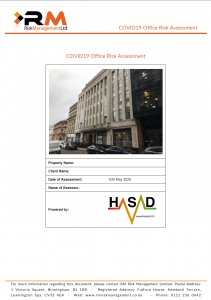
Outsource your COVID-19 Risk Assessment here
COVID-19 Risk Assessments can be a daunting prospect for many companies. Outsource your COVID-19 Risk Assessment here with RM’s new COVID-19 Risk Assessment Service. The COVID-19 Risk Assessment is the first of 5 steps to working safely that the UK government expects duty holders to complete before restarting work, following the Coronavirus outbreak. Since May 2020, property managers from across the UK have approached RM to outsource their COVID-19 risk assessments. As a result, in the past 4 weeks, RM has conducted over 125 COVID-19 Risk Assessments for Offices, Shops, Cafes, Retail Parks, Industrial Estates and Shopping Centres. RM’s new ‘Return to Work’ COVID-19 Risk Assessment Service is the perfect solution for businesses that want to outsource their COVID-19 risk assessment to a third party consultancy. It is based upon the latest UK government guidance covering Office and Contact Centres & Shops and Branches. Key areas covered: The key areas […]
Read More
COVID19 Legionella risk post lockdown
When tackling the spread of the COVID19 virus, it has been easy for property managers to lose focus on general day to day obligations. It is important for property managers to ask what is the impact of the COVID19 lockdowns on the risk from legionella bacteria. In many instances, reduced staff on site constitutes as a significant change to a property and therefore the COVID19 legionella risk should be re-assessed. At this time, Health and Safety Law continues to apply and duty holders still maintain a legal obligation to protect those in and around their properties from exposure to legionella bacteria both now and in the future. Legionella bacteria can grow at temperatures between 20°C and 45°C, where a suitable nutrient is available and where turnover of water is low. As businesses increasingly move to a home-working model, the demand for water in many commercial buildings will be significantly reduced. […]
Read More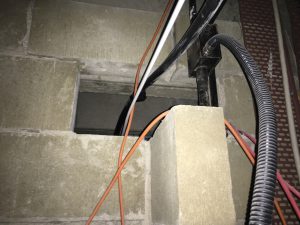
Fire Stopping Surveys – Taking Action
What is Fire Stopping? Fire stopping is the sealing of gaps, breaches or issues found around fire resistant floors, doors and construction. It is a range of compliant products that are installed to help slow the spread of fire through a building. The materials used in a fire stop must be able to resist fire for a reasonable period of time. Sometimes, fire stopping is not applied correctly or even at all by contractors, at times when construction or refurbishment or minor works occur within a property. If there is no fire stopping around the engineered fire resistant areas, if it has been incorrectly installed or if cracks and openings are appearing around existing fire stopping, this ultimately puts lives at risk. Do I need a Fire Stopping Survey? In order to determine whether there are any issues, a Fire Stopping Survey needs to be conducted. A Fire Stopping Survey, […]
Read More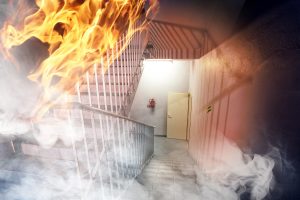
Taking Fire Safety Seriously
A few weeks ago, Fire Safety Matters reported that more than 7,000 Londoners are to get new fire doors. This is part of a £9,000,000 project to upgrade fire doors in six London boroughs across twelve City of London Corporation-run housing estates. All front, communal and fire escape doors will be replaced in over 2,300 homes, ensuring that there is an enhanced up to 60 minute fire resistance. This enormous project comes down to one simple thing: keeping residents safe. Since the Grenfell Tower incident, there has been a new focus on residents’ safety, and it is the duty of all responsible organisations and people to make sure that all the necessary steps are taken to minimise any risks when it comes to fire. Big Costs One of the more recent cases to hit the news that demonstrates how important fire safety is has been the incident in Palmer’s Green. […]
Read More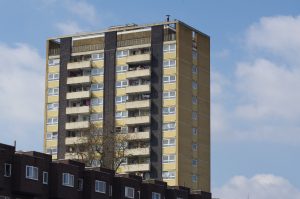
Quarterly Fire Door Surveys to become law
Following the Grenfell Tower Inquiry, the upcoming fire safety bill will state that fire door surveys will need to be conducted in all blocks of flats, every three months. Changes in legislation The FIA (Fire Industry Association) last week reported upon this proposed big change in the law. Currently there is no specific legislation in place that requires fire doors surveys to be underaken, but these sorts of assessments play a huge role in fire safety. Although changes such as the fire door surveys have come about following the Grenfell Tower Inquiry Report, the report in itself only stated that “all fire doors, including their closers, should be routinely checked or inspected by a suitably qualified professional.” However, it seems the government wants to take this more seriously and it will be insisting on checks every three months. The FIA’s article highlighted that “Housing secretary Robert Jenrick has stated that […]
Read More